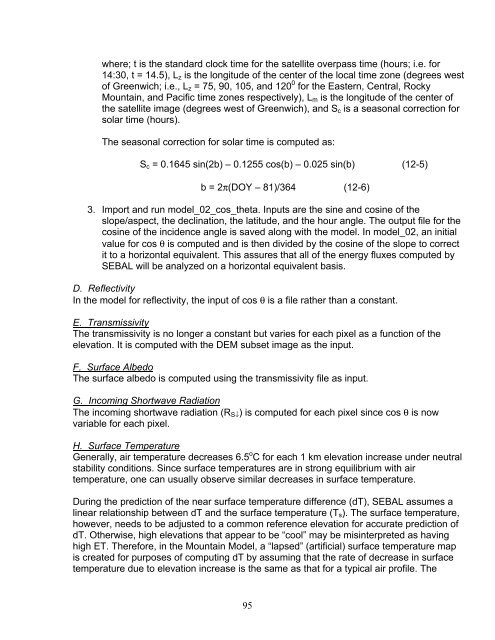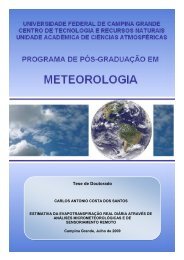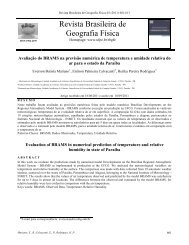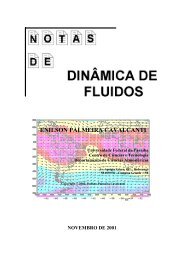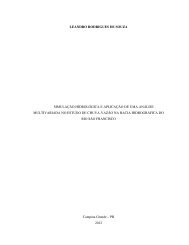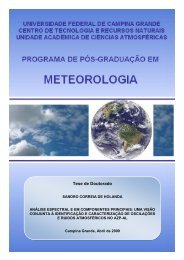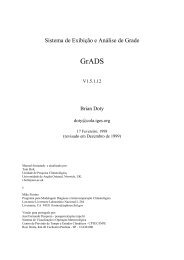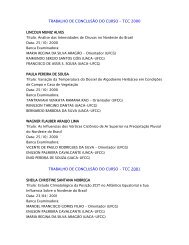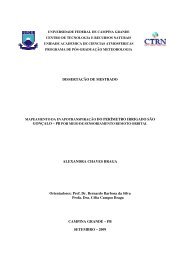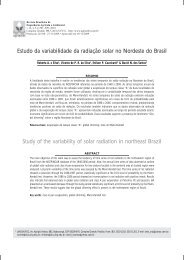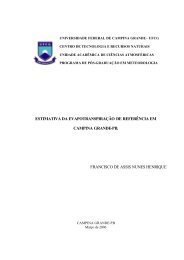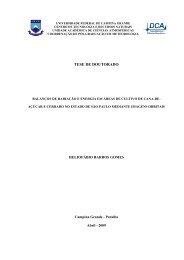You also want an ePaper? Increase the reach of your titles
YUMPU automatically turns print PDFs into web optimized ePapers that Google loves.
where; t is the standard clock time for the satellite overpass time (hours; i.e. for14:30, t = 14.5), L z is the longitude of the center of the local time zone (degrees westof Greenwich; i.e., L z = 75, 90, 105, and 120 0 for the Eastern, Central, RockyMountain, and Pacific time zones respectively), L m is the longitude of the center ofthe satellite image (degrees west of Greenwich), and S c is a seasonal correction forsolar time (hours).The seasonal correction for solar time is computed as:S c = 0.1645 sin(2b) – 0.1255 cos(b) – 0.025 sin(b) (12-5)b = 2π(DOY – 81)/364 (12-6)3. Import and run model_02_cos_theta. Inputs are the sine and cosine of theslope/aspect, the declination, the latitude, and the hour angle. The output file for thecosine of the incidence angle is saved along with the model. In model_02, an initialvalue for cos θ is computed and is then divided by the cosine of the slope to correctit to a horizontal equivalent. This assures that all of the energy fluxes computed by<strong>SEBAL</strong> will be analyzed on a horizontal equivalent basis.D. ReflectivityIn the model for reflectivity, the input of cos θ is a file rather than a constant.E. TransmissivityThe transmissivity is no longer a constant but varies for each pixel as a function of theelevation. It is computed with the DEM subset image as the input.F. Surface AlbedoThe surface albedo is computed using the transmissivity file as input.G. Incoming Shortwave RadiationThe incoming shortwave radiation (R S↓ ) is computed for each pixel since cos θ is nowvariable for each pixel.H. Surface TemperatureGenerally, air temperature decreases 6.5 o C for each 1 km elevation increase under neutralstability conditions. Since surface temperatures are in strong equili<strong>br</strong>ium with airtemperature, one can usually observe similar decreases in surface temperature.During the prediction of the near surface temperature difference (dT), <strong>SEBAL</strong> assumes alinear relationship between dT and the surface temperature (T s ). The surface temperature,however, needs to be adjusted to a common reference elevation for accurate prediction ofdT. Otherwise, high elevations that appear to be “cool” may be misinterpreted as havinghigh ET. Therefore, in the Mountain Model, a “lapsed” (artificial) surface temperature mapis created for purposes of computing dT by assuming that the rate of decrease in surfacetemperature due to elevation increase is the same as that for a typical air profile. The95


